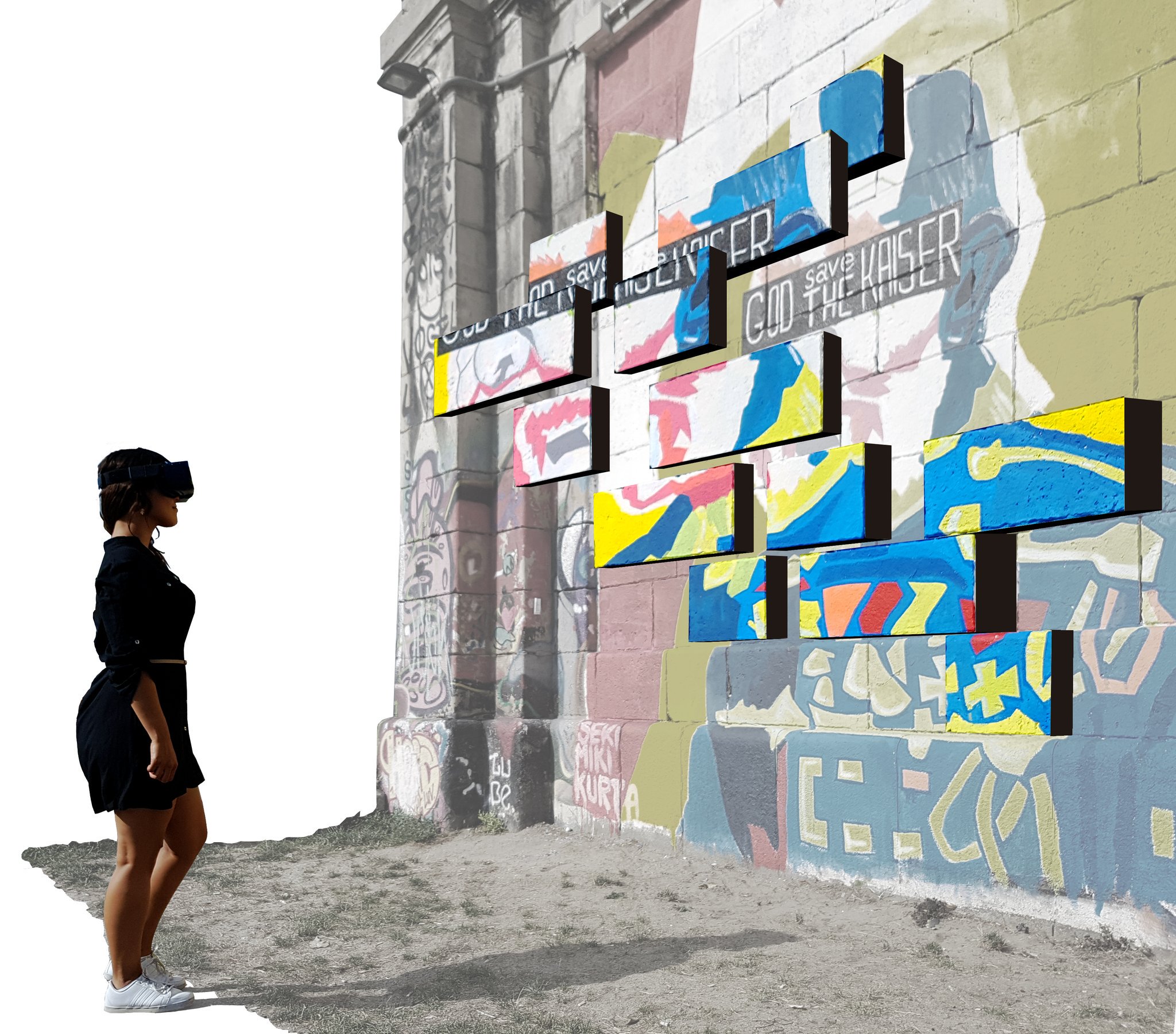What Is Augmented Reality Street Art?

Augmented Reality murals work with image tracking. In essence, it’s like scanning a QR code. For an AR mural to work, you need a smart device such as a phone or tablet, on which you can open an app or AR web-browser. You then enable this app to access the camera, and the camera recognizes certain patterns on the mural. This image recognition works with contrasts. The app is basically trying to read the contrasts in an image, in order to match the image with its assigned content. Once the image is recognized, the content that was pre-assigned will appear. This content can be as simple as a static image, or as complex as a sophisticated animation powered with gamification.
The Evolution of Augmented Reality Street Art:
Augmented reality (AR) street art finds its roots in the larger augmented reality movement that gained momentum over the past decade. AR technology overlays digital content onto the real world through smartphones, tablets, or AR glasses, offering users an enriched and interactive experience. When artists recognized the potential of this technology in the context of street art, a new frontier of creativity was born.
More On How AR Street Art Works:
AR street art typically involves the use of specific mobile applications that users can download on their devices. When they point their devices at a designated street art piece, the AR app superimposes digital elements, such as animations, 3D objects, or additional visual layers, onto the physical artwork. The result is a dynamic and interactive art encounter that blurs the lines between the virtual and real worlds.
Impact and Advantages of AR Street Art:
Enhanced Engagement: AR street art captivates audiences by encouraging active participation. Viewers become co-creators as they interact with the digital elements, making each experience unique.
Increased Accessibility: The beauty of AR street art lies in its accessibility. Anyone with a smartphone or tablet can partake in the augmented reality experience, eliminating barriers to entry into the art world.
Preserving Art Temporality: Traditional street art is often temporary and susceptible to environmental damage or vandalism. AR street art, however, can be "permanent" in the digital realm, allowing artists to preserve their creations beyond the physical realm.

